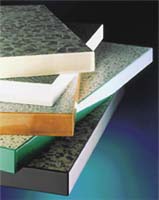Reprinted with permission from Modern Woodworking Magazine.
By David Welch
With all of the options available, how do you know which is the right edgebander for your particular operation?

“Manufacturers considering the purchase of a new or upgraded edgebander should identify what they want the machine to be able to do — today and in the next three to five years,” said Bruce Baker, direct sales representative, Altendorf America. “Manufacturers also should identify how their production may change in the future — in terms of volume and flexibility for new and different products. Budget considerations are important. Obtaining a measure of current expenditures to ‘cover the edges’ today will result in a well-informed decision concerning investment versus return on this important machine later. Talking with other owners of edgebanders with similar size or specification helps identify capabilities, price range and reputation of machines currently available on the market.”
“The two most important areas for consideration, particularly for first time buyers, are ‘off the end quality’ and a representative who knows your business and specific equipment needs,” Baker said. “The quality of the product leaving the machine should be able to proceed to the next step of production — without further manual work.”
For those companies looking for an edgebander, Rick Hannigan, vice president of sales for Holz-Her, Inc., offers similar advice. “Companies in the market for a new edgebander first should determine their requirements, not only for today’s customer and production needs, but also for the future. Many machines are modular and can be purchased with open space that will allow for additional working units in the future. The desire to create a work cell that networks all machines together, including office PC (design package/ optimization), beam saw, label printing, CNC machining center and edgebander will have a direct impact on the choice of machines. In this instance, control systems and automation become very important. Companies should choose a vendor that offers a high level of technical expertise, fast parts service and a reputation for quality and innovation.”
Balance speed with quality
It is difficult to compare edgebanders without taking into account design and engineering features. “Never compare machines using a spreadsheet type approach,” said Rick Ransom, product specialist at Homag Group, Stiles Machinery, Inc. “Remember, a Yugo and a Mercedes both have engines, transmissions and seats etc., but have very different levels of quality, engineering and safety. When selecting an edgebander, a company should balance quality of finish against machine feed speeds and take into account the fact that particleboard (the product to which edgebanding is most widely applied) typically weighs forty-five pounds per cubic foot.”
Flexibility, machine sturdiness and production speed all should be considered when buying an edgebander, according to Renato Moresi, product manager for Biesse. “One should first decide what mix of products he wants to do. Is it just tapes that he wants to do or is it tapes, 3mm PVC, solid wood or all of the above. Once someone has got that down, my recommendation would be to go with a heavy-based machine. The more stations that you have the more vibration occurs, and the more vibration the better the chance is of screws coming undone over time. The lighter the machine base, the greater the chances for wear and tear.”
“Production speed is a consideration as well,” Moresi continued, “and that depends upon the amount of material to be banded in a day. If the person is running material all day long, the flow-through speed becomes more important than the flow-through speed of someone who runs a slight amount of material through the bander. Coupled with the speed of the track is the number of stations required to work on that panel. The fewer the stations the slower the track has to go because of the fact that the panel is probably being hit with only one function at each particular station. More stations engaged in performing several processes are required for running at faster speeds.”
Finally, it is important that the new edgebander owner remembers some simple maintenance tips. “I would suggest that an edgebander operator keep the track lubricated to give the machine a longer life,” Moresi said. “Also, as one changes the speed of the track, he should change the glue roller, the pressure roller and the feed roller accordingly.”
Reprinted with permission from Modern Woodworking Magazine. Free subscriptions are available by completing an on-line Subscription Form.
Editor's Note: Automated workflows customized by Doucet (website) increase production efficiency.